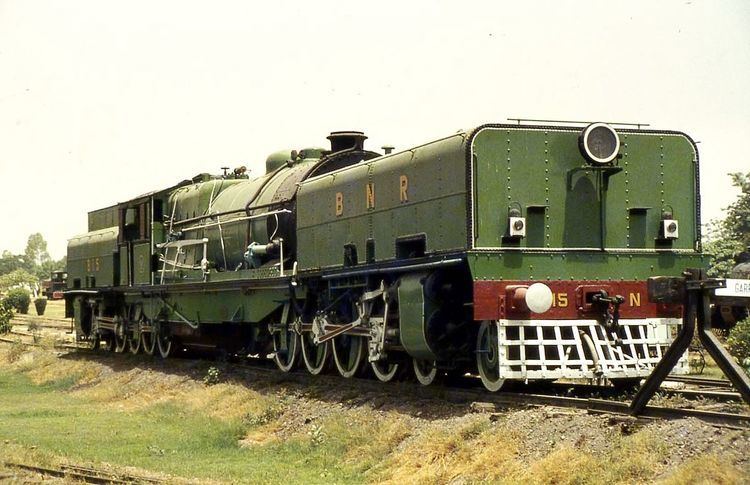UIC class 2D+D2 Turkish class 46+46 First use 1929 | French class 240+042 Russian class 2-4-0+0-4-2 | |
 | ||
Swiss class 4/6+4/6, 8/12 from 1920s | ||
Under the Whyte notation for the classification of steam locomotives by wheel arrangement, the 4-8-0+0-8-4 is a Garratt articulated locomotive. The wheel arrangement is effectively two 4-8-0 locomotives operating back to back, with the boiler and cab suspended between the two engine units. Each engine unit has two pairs of leading wheels in a leading bogie, followed by four coupled pairs of driving wheels and no trailing wheels. Since the 4-8-0 type is known as a Mastodon type, the corresponding Garratt type would be referred to as a Double Mastodon. A similar wheel arrangement exists for Mallet locomotives, but is referred to as 4-8-8-4.
Contents
Overview
The 4-8-0+0-8-4 was the fifth rarest Garratt wheel arrangement, with a total of 26 locomotives constructed.
Usage
All the 4-8-0+0-8-4 Garratts were built by Beyer, Peacock and Company for the 5 ft 6 in (1,676 mm) gauge Bengal Nagpur Railway in India. The first sixteen were designated Class N and were delivered in 1929, while ten more arrived in 1931 and were designated class NM. The locomotives had Belpaire fireboxes and piston valves.
Two of the type survive, both of Class N. No. 811 is staged at Kharagpur Workshop, while no. 815 is on display at the National Rail Museum in New Delhi.
